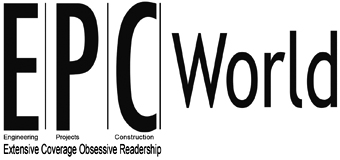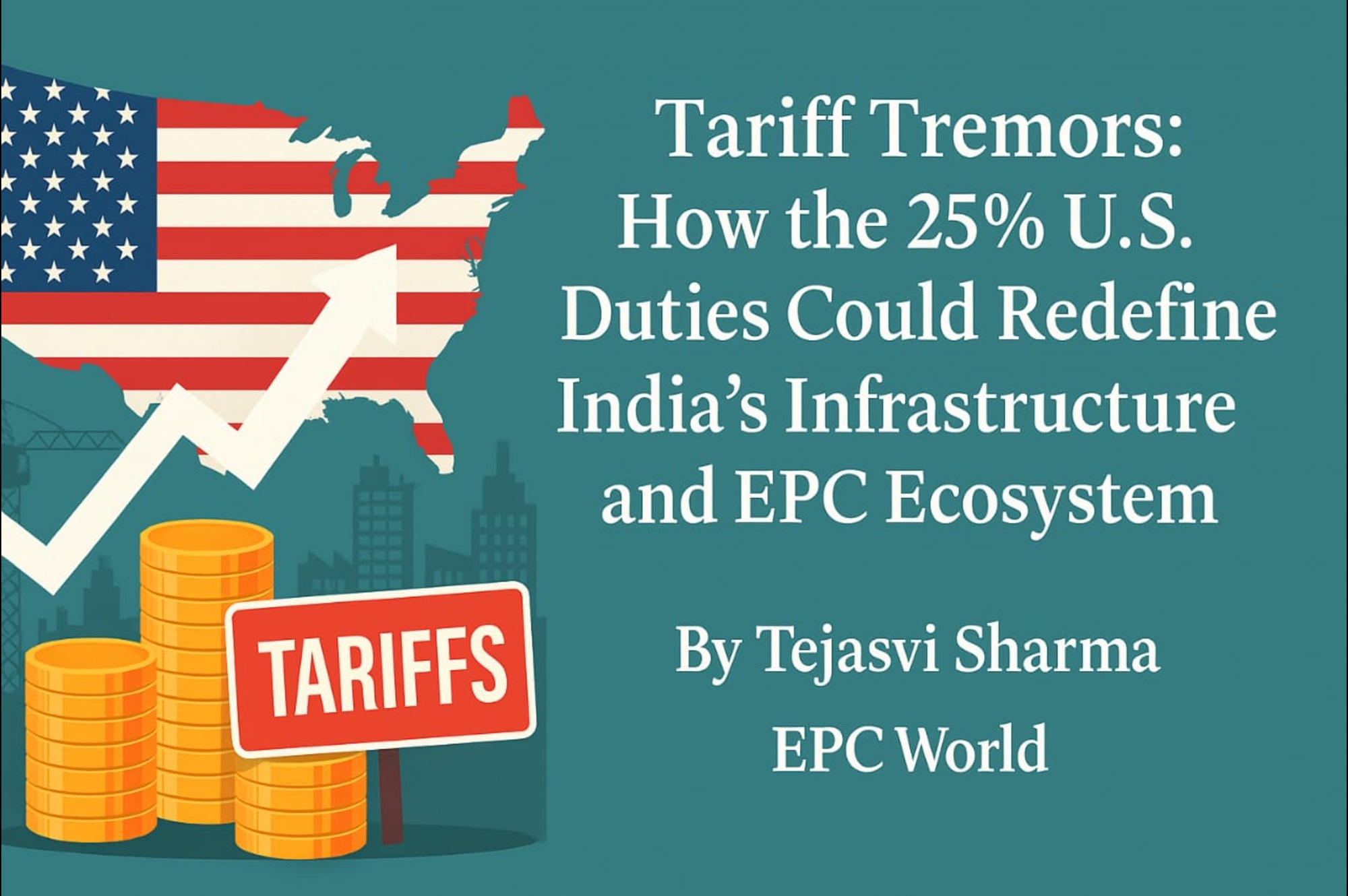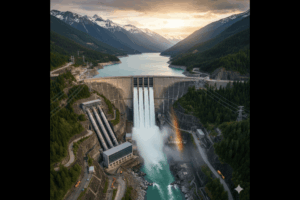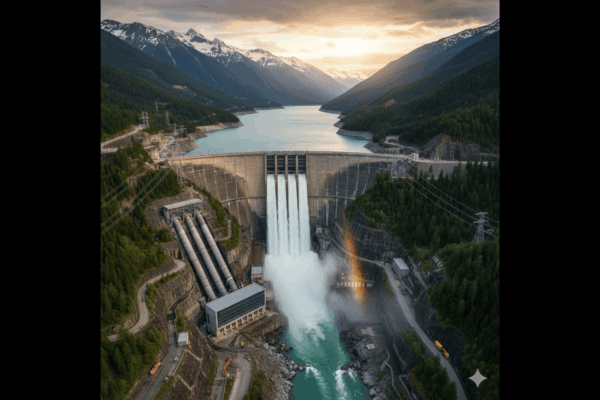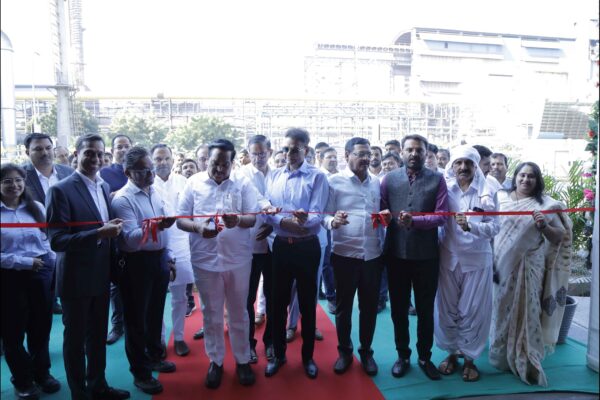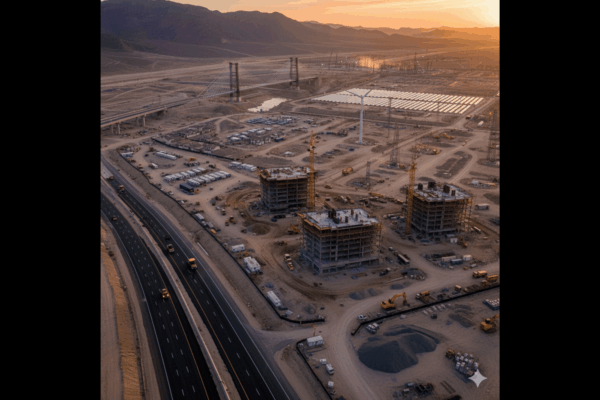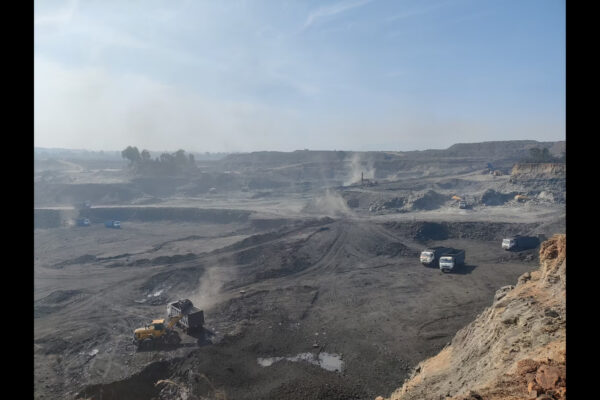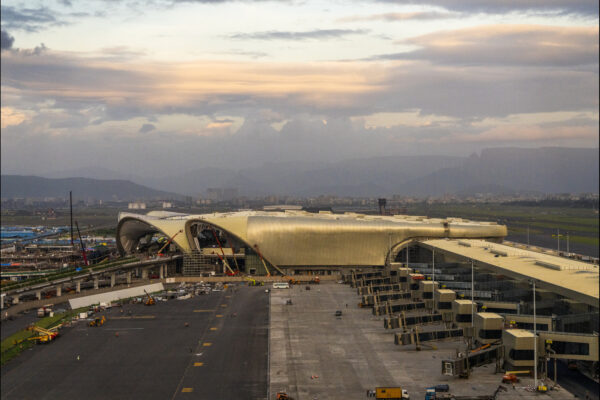Tariff Tremors: How the 25% U.S. Duties Could Redefine India’s Infrastructure and EPC Ecosystem
by Tejasvi Sharma, Editor-in-Chief, EPC World
On 30 July 2025, the United States unveiled an unprecedented 25% tariff regime on a wide array of Indian exports. Citing “reciprocal corrections” and “strategic trade imbalances,” the Biden administration’s move represents a significant shift in U.S.–India economic dynamics. Yet, while the headlines are dominated by the impact on textiles, pharmaceuticals, and solar modules, a more insidious consequence looms in the background—the impact on India’s infrastructure and EPC (Engineering, Procurement and Construction) industry.
Even though EPC firms may not be the direct targets of these tariffs, the ripple effects of such sweeping trade restrictions are far-reaching. Global commodity inflation, disrupted supply chains, margin contractions, and altered export dynamics threaten to upend the equilibrium that Indian infrastructure stakeholders have fought hard to establish in the post-pandemic recovery era.
Materials and Machinery: The First Domino to Fall
Infrastructure, by its very nature, is a commodity- and capital-intensive sector. Key inputs—steel, aluminium, industrial piping, high-voltage switchgear, sensors, bearings, control systems, and rolling stock components—are either directly imported or dependent on price-sensitive global trade networks. With the imposition of tariffs, the price volatility across these commodities has already begun to reflect on EPC project costings.
The Delhi–Meerut RRTS, a ₹30,000 crore high-speed transit corridor, exemplifies this trend. The project, which depends on imported aluminium casing, tunnel boring technologies, and precision electronics, has seen procurement costs for specific components rise by 11% year-on-year, exacerbated by increased freight costs and reshuffling of global supply chains. Contractors including Afcons and L&T have flagged concerns over non-compensable cost escalations under fixed-price contracts, creating tension between project delivery and financial sustainability.
Export-Oriented EPC: Losing Competitive Ground
Beyond domestic impacts, India’s ambitions as a global EPC player are now under scrutiny. Indian firms like BHEL, L&T, and IRCON International have secured a foothold in developing markets across Africa, Southeast Asia, and the Middle East. However, tariff-induced disruptions are now eroding export competitiveness.
Take for instance BHEL’s ₹2,400 crore turbine contract with Kenya’s KenGen. With U.S.-sourced control modules now subject to higher duties, and the cost of integrating those into the Indian supply chain rising sharply, BHEL finds its once-healthy 14% margin buffer dangerously thin. Competitors from China and South Korea—less encumbered by such tariff entanglements—are swiftly moving to capitalise on this void.
The Solar Conundrum: ReNew’s Export Model Undone
The solar segment, a crown jewel of India’s green transition, has been particularly bruised. ReNew Power, which had planned to export surplus photovoltaic modules from its Telangana 2 GW mega park to the U S, now finds its ₹400 crore annual export ambition economically unsustainable. This shift not only undermines India’s export revenue but also reduces the economies of scale that were instrumental in lowering domestic solar installation costs.
The secondary consequence is more disturbing: India’s ability to scale internal solar deployment—particularly in public infrastructure projects—may take a hit, as unit costs rise and investor confidence wanes.
Technology and ICT-Driven Infrastructure: Delays Imminent
Modern infrastructure projects—especially smart cities, metros, highways, and renewable energy grids—depend increasingly on digitally embedded systems, many of which are imported or licensed from Western manufacturers. The Mumbai Coastal Road Project, a ₹12,700 crore investment in urban mobility, relies on European and American components for its tunnelling control systems and electrical infrastructure. Since Q1 2025, cost overruns in imported bearings, TBMs, and control panels have led to a 4.5% overrun in mechanical-electrical budgets. EPC consortia, led by HCC and L&T, have been compelled to invoke force majeure clauses and renegotiate delivery schedules, stalling project milestones.
Financial Pressure and Sectoral Fragility
A recent CRISIL Ratings report warns that India’s engineering and capital goods exports—many of which are linked to infrastructure development—may witness a contraction of 8–12% in the second half of FY2025–26. Smaller players in the EPC value chain—subcontractors in fabrication, MEP installations, and automation—are experiencing margin compressions of 5–7%, with downstream liquidity pressures mounting.
Even domestically focused projects are not immune. Several projects under the National Infrastructure Pipeline (NIP) and Bharatmala Pariyojana include components that are either imported or co-engineered with foreign collaborators. Escalation of input costs and the need for re-tendering could delay timelines and inflate budgets.
Strategic Response: Building Resilience, Not Resistance
The silver lining in this storm lies in the opportunity to recalibrate. India’s infrastructure and EPC sectors must pivot from crisis response to structural resilience.
Key Recommendations
Contractual Evolution: Future EPC contracts must incorporate dynamic pricing models, escalation clauses, and tariff contingency mechanisms—particularly for long-gestation, input-sensitive infrastructure works.
Supply Chain Localisation: Targeted investment in domestic manufacturing of industrial equipment, digital control modules, and fabrication units can serve as a bulwark against future global disruptions.
Trade Realignment: Diversifying export strategies toward non-U.S. markets—the Gulf, ASEAN, East Africa—can cushion the decline in U.S.-centric trade volume.
Policy Advocacy: Indian stakeholders must engage with the government to negotiate sector-specific exemptions or phased implementations through bilateral or multilateral diplomacy under platforms like the Indo-Pacific Economic Framework (IPEF).
Sovereign Infrastructure Fund Hedging: Establishing a government-backed fund to hedge public infrastructure against international commodity and tariff fluctuations may offer stability.
A Moment of Reckoning
The 25% tariff imposition is not merely a trade decision—it is a stress test for India’s infrastructure ecosystem. While the direct impact may not yet mirror a crisis, the second-order effects—inflationary pressures, export destabilisation, and contractual strain—are already emerging as structural fissures.
Yet, this disruption may well become the inflection point that compels India to build an EPC framework that is globally competitive, locally rooted, and future-proof. As the global trade architecture becomes more politicised and protectionist, India must fortify its infrastructure machinery not merely to survive, but to thrive in a fractured global order.
Tags
